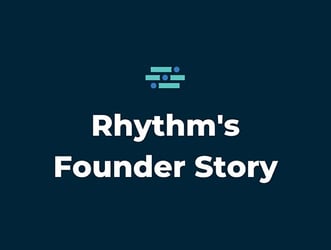In a world where associations are increasingly squeezed between rising costs and shifting member expectations, finding sustainable non-dues revenue streams is no longer optional — it’s essential.
One of the most overlooked opportunities? The content you already have. Associations are trusted voices in their industries, but too often, valuable resources like research, toolkits, and templates are given away or buried in blogs and webinars with no structured monetization strategy.
The good news is that you don’t need to reinvent your entire technology stack or produce hundreds of new assets to start generating revenue. With thoughtful packaging, positioning, and promotion, you can transform your existing content into a meaningful source of income.
Here’s how.
Content as a Product: Reframing What You Already Have
If you're like most associations, your team is constantly producing valuable content to support members — think webinars, handouts, how-to guides, templates, or even policy manuals. But because those items are created as part of programs or events, they’re rarely treated as standalone assets with commercial potential.
Yet the content your team has already produced is often exactly the kind of resource your members (and non-members) would pay for if it were easier to access and positioned with value.
Instead of pouring time and budget into creating new content from scratch, start with what’s already in your vault:
- Research reports and benchmarking studies
- Templates, checklists, and toolkits
- Archived webinar recordings
- Slide decks or downloadable worksheets
This isn’t about repurposing blog posts. It’s about positioning deep, practical content as a product, not a giveaway. And it starts with rethinking what content deserves a price tag — and who’s willing to pay for it.
Segmenting Your Audience: Who Buys What, and Why
Not all content should be offered to all audiences and not all buyers are looking for the same kind of value. That’s why segmenting is critical.
As an association leader, you’re juggling the needs of diverse stakeholders. New professionals want tools to get up to speed. Executives need strategic insights. Vendors want visibility. And non-members? They’re often curious, but may be hesitant to commit to a full membership.
Segmenting your content strategy helps you deliver the right product to the right person at the right time.
Try breaking it down like this:
- For members:
- Include premium content as a tangible benefit at time of join/renewal
- Offer downloadable kits based on membership tier
- Reinforce the value of belonging through exclusive access
- For non-members:
- Sell standalone guides and reports as entry points to your expertise
- Capture new audiences who may not yet be ready to join, but will pay for a solution
- For industry segments or roles:
- Offer toolkits for specific personas
- Group content by objective (e.g., advocacy, engagement, operations)
When content is designed with your personas in mind, you’ll generate more interest, more purchases, and more long-term engagement.
Thoughtful Structure: Package Content for Relevance and Utility
When it comes to digital content, more isn’t always better. The real value comes from how it’s organized and delivered. Your members — whether they’re attorneys, healthcare professionals, engineers, educators, or nonprofit leaders — need content that’s timely, targeted, and easy to act on.
Whether you’re housing your materials in a resource center, a gated library, or simply linking to downloads via email, the way you organize and package content matters.
Start by asking:
- What professional challenges are most pressing for your members right now?
- Are there common milestones they face — onboarding, certification, compliance cycles, annual planning?
- Can you segment content by audience type, job function, or experience level?
Packaging ideas that work across industries:
- Industry Benchmarking Report + Data Pack: Analyze survey data or operational metrics from your members and present key trends, charts, and insights relevant to the profession.
- Regulatory Compliance Toolkit: Provide templates, checklists, and explainer documents for staying compliant with new or complex industry regulations.
- Professional Skills Assessment + Development Workbook: Help individuals assess their competencies, identify growth areas, and create a personalized development plan.
- Grant Writing + Fundraising Resource Kit: Include sample proposals, budget templates, success stories, and fundraising planning guides tailored to the sector.
- Start-Up Success Kit for New Practices/Businesses: Offer foundational templates, licensing guides, business plan frameworks, and marketing checklists for new entrants in the field.
- Client or Customer Communications Templates: Profession-specific email templates, FAQs, intake forms, or explainer documents to improve service delivery or communication.
- Annual Strategic Planning Workbook: A guided PDF or interactive workbook to help professionals or organizations set goals, evaluate progress, and outline priorities.
- Code of Ethics Implementation Toolkit: Break down your profession’s code of conduct and offer tools for training, applying, and reinforcing ethical standards in daily work.
- Hiring Toolkit for Employers: Include job description templates, interview question banks, candidate evaluation forms, and onboarding checklists specific to the field.
- Industry Salary + Compensation Report: Sell access to in-depth compensation data, segmented by role, geography, and experience based on data from member surveys.
- Marketing Starter Kit: Share branding guidelines, social media content templates, elevator pitch builders, and website copy examples.
- Digital Transformation Resource Pack: Offer assessments, vendor comparison templates, and implementation guides for adopting new tools or technologies in the field.
- Exam Prep Materials or CE Credit Bundles: Bundle study guides, practice quizzes, and reference sheets aligned to certifications, licensure, or continuing education requirements.
- Risk Management Toolkit: Provide sample incident response plans, risk assessment checklists, insurance coverage tips, and best practices tailored to the profession.
- Small Business Operations Toolkit: Provide time-saving templates for professionals managing multiple functions that includes marketing plans, budget spreadsheets, internal workflows, and vendor comparison tools.
- People Management Starter Pack: Help new supervisors succeed with editable one-on-one meeting agendas, performance review templates, feedback frameworks, and leadership development planning tools.
When you present content this way, it feels intentional. Your members will be more likely to use — and value — the resources you’ve already worked hard to produce. Plus, clear packaging supports easier promotion, pricing, and delivery.
Monetization Models That Work
You already wear a lot of hats, so launching a new revenue stream can feel overwhelming. But monetizing content doesn’t need to be complicated or high risk. In fact, some of the most effective models are also the simplest.
Rather than trying to build a subscription platform or gate all your resources behind a membership wall, start by offering options that align with how your audience already consumes value — on-demand, purpose-driven, and at a fair price.
Proven approaches include:
- Pay-per-download: Sell items like templates, reports, or legal guides individually.
- Member-inclusive bundles: Automatically grant access to a curated toolkit when someone joins or renews, creating a “wow” moment that reinforces value.
- Promotional bundles: Combine a few related assets into a themed, discounted pack which can be great for end-of-year campaigns or new program launches.
- Sponsored content: Partner with vendors to co-develop or underwrite content, offering them visibility while giving members valuable resources.
Focus first on what’s easy to execute. Test pricing, gather feedback, and iterate before investing in more complex strategies.
Getting Started: Launch Without Overcomplicating It
You don’t need a fully searchable digital library or subscription engine to launch a profitable content initiative. You need clarity on what matters, confidence in your value, and a few basic tools to deliver.
If you’ve been putting this off because it feels “too big,” here’s your starter plan.
Start small and smart:
- Identify 3–5 strong content pieces: Choose resources with practical utility and clear takeaways.
- Group them logically: Package them around a need, time of year, or role.
- Price modestly: $15–$75 per download or kit is a good entry point to test demand.
- Leverage what you already use: Use your AMS to sell or grant access digitally.
- Promote like a product launch: Email campaigns, blog posts, and event follow-ups are great channels to build momentum.
The point is not to build something massive, it’s to validate the concept and show that your content has real, revenue-generating value.
Promotion: Don’t Hide Your New Revenue Stream
You wouldn’t launch a new event or campaign and then forget to promote it. The same applies to your content products. If you don’t talk about it, they won’t know it’s there.
Your content deserves visibility and your audience deserves reminders that these solutions exist.
Tactics that work:
- Dedicated emails showcasing a featured toolkit or download
- “Resource of the Month” sections in your newsletter
- Follow-up offers after webinars or conferences
- Seasonal promotions tied to budgeting, compliance, or strategic planning
- Bundling content into welcome sequences for new or lapsed members
Even just a few targeted promotions can create real traction.
Measure and Iterate: Success Leaves Clues
You already track key metrics for events, membership, and marketing. Apply the same mindset to your content revenue stream.
Monitor metrics like:
- Revenue generated per resource or bundle
- Number of purchases per resource or bundle
- Content engagement among members vs. non-members
The insights will help you:
- Adjust pricing and packaging
- Decide what to sunset or feature
- Identify new content topics based on popular categories
Treat content monetization like any other program: review performance, learn from your audience, and improve with each cycle.
Final Thoughts: Quality Over Quantity Wins
In this economic climate, associations can’t afford to overlook the content they’ve already invested in. With the right approach, your existing materials can become a powerful, scalable source of non-dues revenue.
Your members trust you as a source of insight and guidance. Turn that trust into value they’re willing to pay for and build a revenue stream that grows with you.

Kelli is the VP of Revenue at Rhythm. When she’s not diving into what makes associations tick, you can find Kelli planning her next trip or playing with her two rescue pups.






